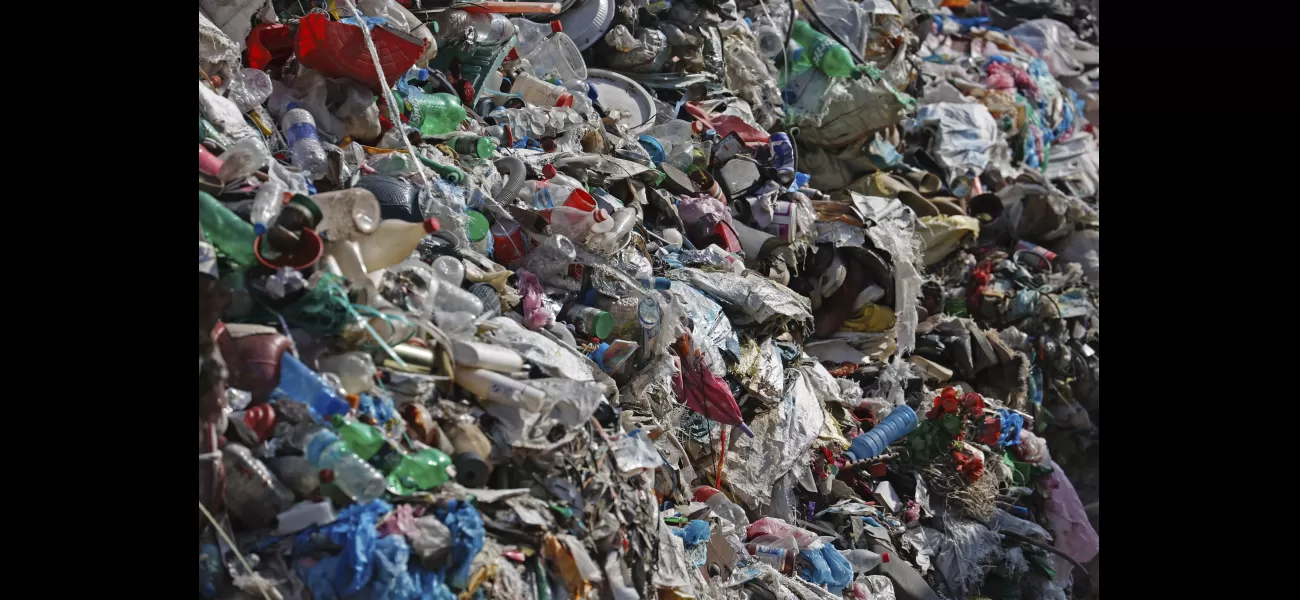Mount Everest is covered in garbage, but it's not just a local dumping ground.
Group of Sherpas clearing garbage and retrieving bodies on Mount Everest.
July 7th 2024.

According to a Sherpa who led a team on a mission to clean up the world's tallest mountain, the highest camp on Mount Everest is unfortunately filled with trash that will take years to remove. The team, funded by the Nepal government, worked tirelessly to clear 11 tons of garbage, four dead bodies, and a skeleton from the mountain during this year's climbing season. Ang Babu Sherpa, who was in charge of the Sherpa team, estimates that there could still be 40 to 50 tons of garbage left at South Col, the last camp before reaching the summit.
Ang Babu explained that the garbage they found consisted mostly of old tents, food packaging, gas cartridges, oxygen bottles, tent packs, and ropes used for climbing and securing tents. He also mentioned that the garbage is frozen in layers due to the high altitude of 8000 meters at the South Col camp. This has been a problem since the first successful summit of Everest in 1953, as thousands of climbers have left behind more than just their footprints.
In recent years, there has been a government requirement for climbers to bring back their garbage or risk losing their deposits. This, along with increased awareness among climbers about the importance of preserving the environment, has helped reduce the amount of garbage left behind. However, this was not always the case in the earlier decades of Everest expeditions. Ang Babu noted that most of the garbage they found was from older expeditions.
The team of Sherpas focused on collecting garbage and bodies from the higher-altitude areas, while the soldiers worked at lower levels and the base camp for weeks during the spring climbing season when the weather is more favorable. But working in the South Col area was a major challenge due to the extreme weather conditions. The thin air and strong winds made it difficult for the team to stay for long periods of time, and the freezing temperatures made the work even more challenging.
Ang Babu explained that digging out the garbage was also a difficult task as it was frozen inside the ice. It took them two days to retrieve a body that was frozen in a standing position deep in the ice near South Col. Due to the weather, they had to pause their work and continue when conditions improved. Another body, found at a higher altitude of 8400 meters, took 18 hours to drag to Camp 2, where it was airlifted by helicopter to Kathmandu for identification.
In total, the team removed 11 tons of garbage, of which three tons were decomposable items that were taken to nearby villages and the remaining eight tons were carried by porters and yaks to Kathmandu for recycling. The garbage was sorted at a recycling facility operated by Agni Ventures, where they even found rechargeable batteries from 1957.
When asked why climbers leave garbage behind, Sushil Khadga from the agency that manages recyclable waste explained that at such high altitudes, life is extremely difficult and oxygen levels are low. Therefore, climbers and their helpers are more focused on saving themselves rather than worrying about garbage. However, with the increasing awareness and efforts to preserve the environment, hopefully, the amount of garbage left behind on Mount Everest will continue to decrease in the future.
Ang Babu explained that the garbage they found consisted mostly of old tents, food packaging, gas cartridges, oxygen bottles, tent packs, and ropes used for climbing and securing tents. He also mentioned that the garbage is frozen in layers due to the high altitude of 8000 meters at the South Col camp. This has been a problem since the first successful summit of Everest in 1953, as thousands of climbers have left behind more than just their footprints.
In recent years, there has been a government requirement for climbers to bring back their garbage or risk losing their deposits. This, along with increased awareness among climbers about the importance of preserving the environment, has helped reduce the amount of garbage left behind. However, this was not always the case in the earlier decades of Everest expeditions. Ang Babu noted that most of the garbage they found was from older expeditions.
The team of Sherpas focused on collecting garbage and bodies from the higher-altitude areas, while the soldiers worked at lower levels and the base camp for weeks during the spring climbing season when the weather is more favorable. But working in the South Col area was a major challenge due to the extreme weather conditions. The thin air and strong winds made it difficult for the team to stay for long periods of time, and the freezing temperatures made the work even more challenging.
Ang Babu explained that digging out the garbage was also a difficult task as it was frozen inside the ice. It took them two days to retrieve a body that was frozen in a standing position deep in the ice near South Col. Due to the weather, they had to pause their work and continue when conditions improved. Another body, found at a higher altitude of 8400 meters, took 18 hours to drag to Camp 2, where it was airlifted by helicopter to Kathmandu for identification.
In total, the team removed 11 tons of garbage, of which three tons were decomposable items that were taken to nearby villages and the remaining eight tons were carried by porters and yaks to Kathmandu for recycling. The garbage was sorted at a recycling facility operated by Agni Ventures, where they even found rechargeable batteries from 1957.
When asked why climbers leave garbage behind, Sushil Khadga from the agency that manages recyclable waste explained that at such high altitudes, life is extremely difficult and oxygen levels are low. Therefore, climbers and their helpers are more focused on saving themselves rather than worrying about garbage. However, with the increasing awareness and efforts to preserve the environment, hopefully, the amount of garbage left behind on Mount Everest will continue to decrease in the future.
[This article has been trending online recently and has been generated with AI. Your feed is customized.]
[Generative AI is experimental.]
0
0
Submit Comment





